
Pondside Slinker
September 23rd, 2013
The little Green Herons, practically a quarter the size of the Great Blues, are more challenging to capture. They slink around the edges of the ponds, hidden beneath the overhang, so that even an avid birder can walk by and be none the wiser unless you know where to look. They retreat into grassy cover when you approach, or, if you approach too enthusiastically, simply flush. But it's possible to sort of win ones trust if you stalk it patiently enough--especially if it's busy stalking its own game.
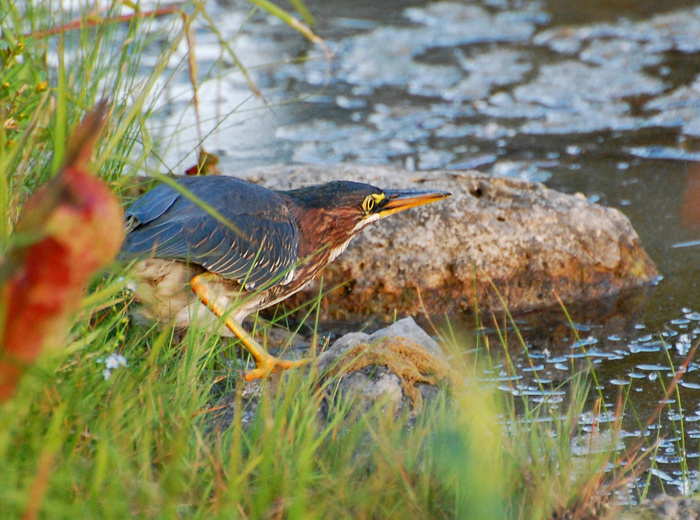
How to tell a photographer to take a hike
September 21st, 2013
Four species of herons have been at Andrew Haydon Park lately: Great Blue Herons, Night Herons, Green Herons, and Great Egrets. Basically all the herons that occur in Ottawa except for the super-secretive bitterns! It's a photographer's dream. Of them, the big, bold Great Blues are by far the easiest to capture.
ETA: make that five species of herons at AHP! Browse over to Gillian's blog to read about her close encounter with a Least Bittern.
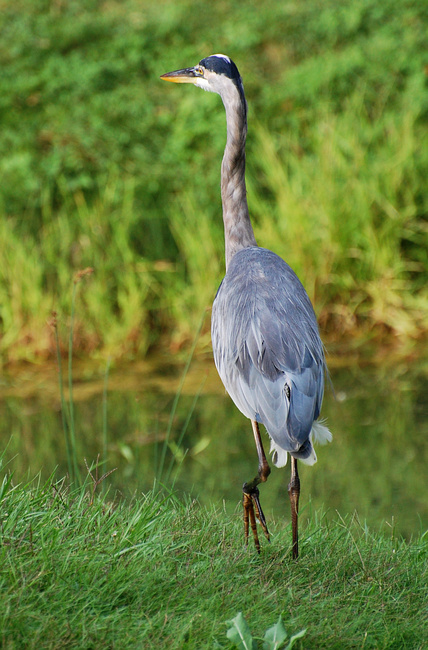
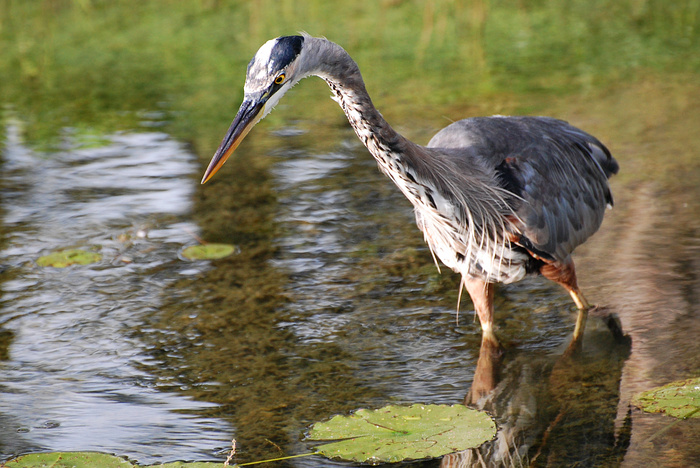
1680x1050 wallpaper
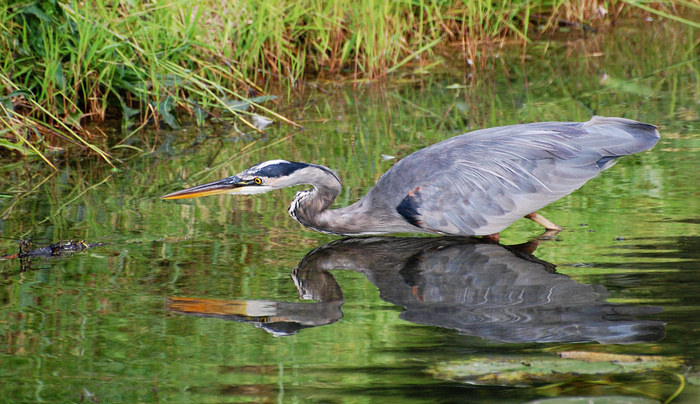
It's difficult to see at this resolution, but he's got his sights on an egg-laying dragonfly. Great Blue Herons typically eat fish, but it's not unusual for them to take an occasional insect snack.
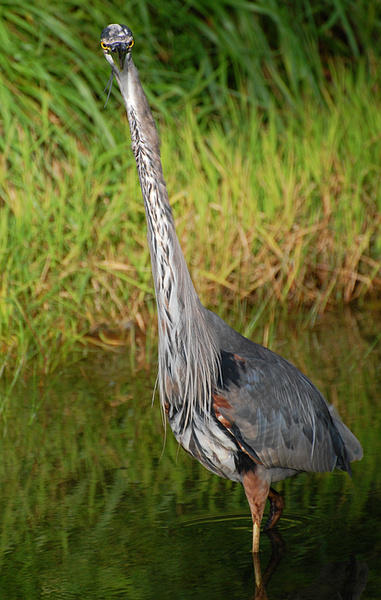
"Oh, are you having trouble fitting me in the frame? I'm sorry. Maybe you should go annoy someone else now."
The Next Generation
September 18th, 2013
It's been a really successful breeding season for the Wood Ducks at Mud Lake. Independent juveniles are everywhere now. This group by the bridge was in a perfect place for photographs.
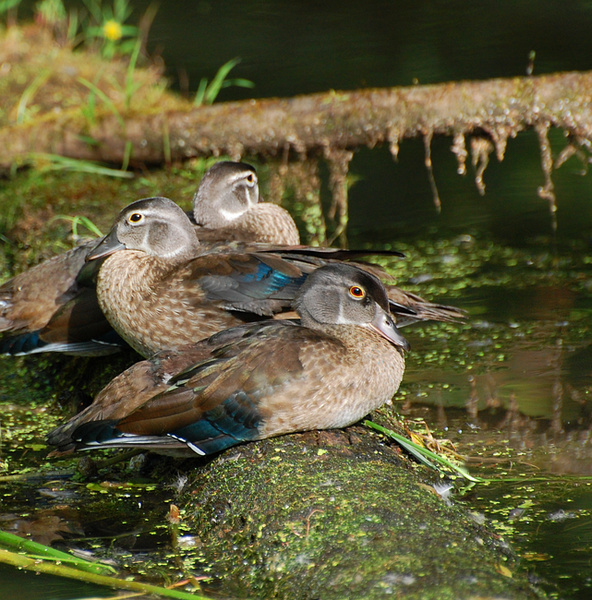
1680x1050 wallpaper
Look closely (or at wallpaper res) and you can see the red eye of the male in front, a harbinger of the gaudy plumage he'll wear in maturity.
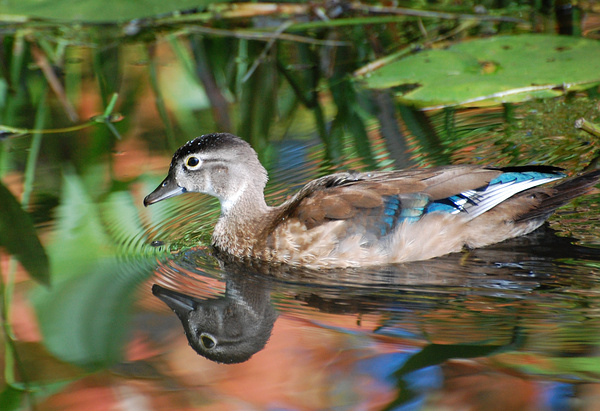
It was one of those golden moments when the sun was splashing all the surrounding colors onto the water.
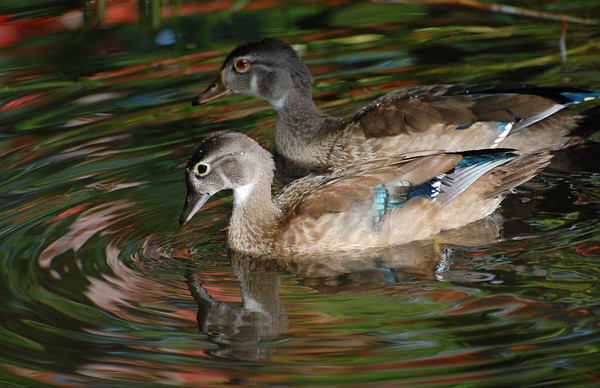
We interrupt your regularly scheduled Ottawa nature photos...
September 16th, 2013
...for this moose!
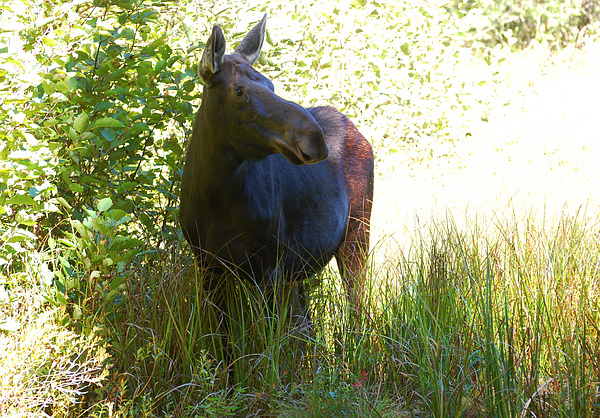
1680x1050 wallpaper
My husband and I just got back from a five-day mini-vacation in Algonquin Provincial Park. We stayed two nights in a B&B on the east side of the park, then two nights in another B&B on the west side, and spent most of our days hiking. I've been wanting to experience Algonquin for years and am thrilled that I finally did!
We encountered this cow moose up close and personal on Mizzy Lake Trail. And when I say "up close and personal", I mean I had to dial my zoom lens all the way back just to get her in the frame. She grazed to within ten feet of us and a group of German tourists, all staring wide-eyed and gasping and fumbling with our cameras. Much further away, across a bog pond, was another cow, and the immense antlers of a bull were visible behind her.
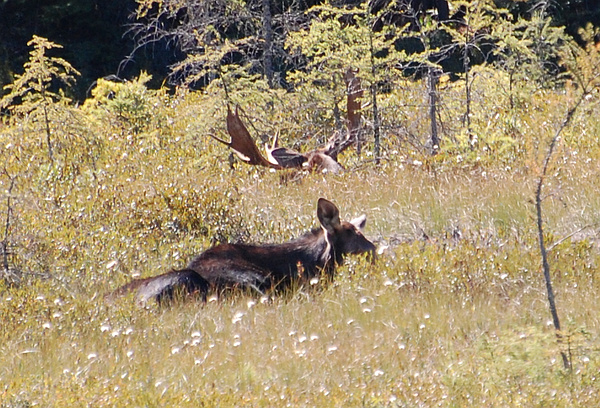
These are the only photos I have to show from the trip, though. Photo ops were rare, with pretty much all the birds we found being distant, hyperactive, or both. There were numerous migrant flocks of warblers and kinglets, distant loons, distant waterfowl, and ravens and blue jays galore. I had been hoping to see some of Algonquin's boreal specialties (species normally only found further north), but unless you count the moose, I only saw one, a female Black-Backed Woodpecker along High Falls Trail. However, it is maddeningly possible that the grouse that flushed near the edge of a spruce bog (on Bat Lake Trail) was the Spruce Grouse I had been hoping to lifelist. It was gone before we could see anything but a flurry of wings.
Rivalling the close-up cow moose for excitement level, at least for me, was my 327th lifer: American Pipit. Pipits are unusual songbirds that act like shorebirds. When a flock of some thirty of them flew back and forth high in the air over a bog pond, I initially assumed they were Cedar Waxwings, since that's what they looked and acted like. But their voices, more like those of goldfinches than waxwings, confused me. I was then stunned to see every single bird settle down into the mud at the margin of the pond, and start picking around for food like sandpipers. "They're shorebirds!" I exclaimed to my husband, before realizing that no shorebirds looked or sounded quite like this. As I watched them forage, I noticed their tails bobbing up and down, and that's when I realized they must be American Pipits. This species is considered common in Ottawa in fall migration, but it has eluded me for years.
I'm eager to go back and find more of Algonquin's boreal specialties: to see Spruce Grouse and Pine Marten, and have Gray Jays take peanuts from my hand. Perhaps a daytrip is in order this winter!
Bill Mason Sand Pit (part 2)
September 10th, 2013
The Calico Pennants are still there--and I'm still in love with them.
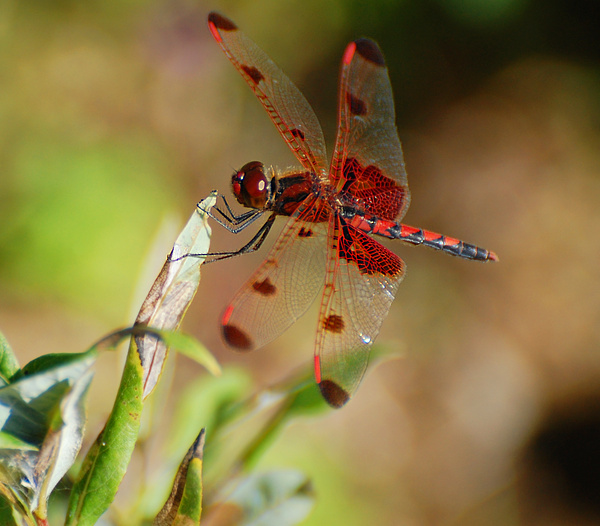
1680x1050 wallpaper
The pond supports a population of Azure Bluets, a particularly vivid bluet damselfly that I have not seen elsewhere. One online source says "often found at newly created habitat, such as borrow pits." Sounds about right!

1680x1050 wallpaper
A few migrant sandpipers around the margins of the pond provided a break from insect-watching. This Greater Yellowlegs was more skittish than the ones I often see at Andrew Haydon Park, so I could only photograph him from a distance.
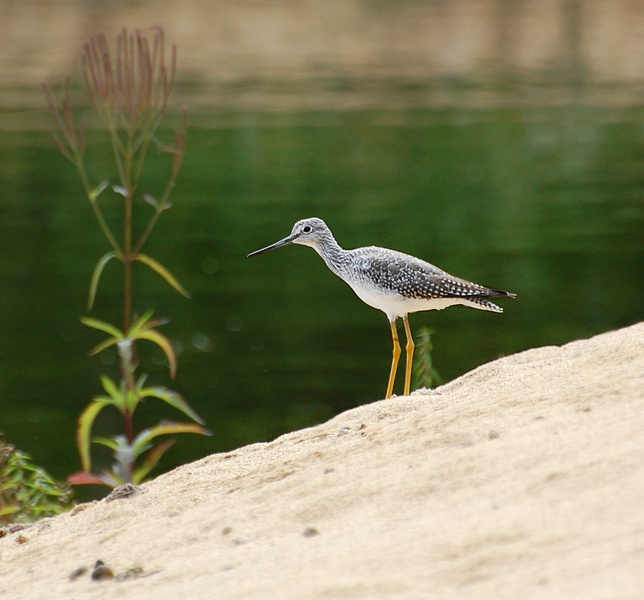
This fellow was dumped noisily on the sand after an altercation with another dragonfly:
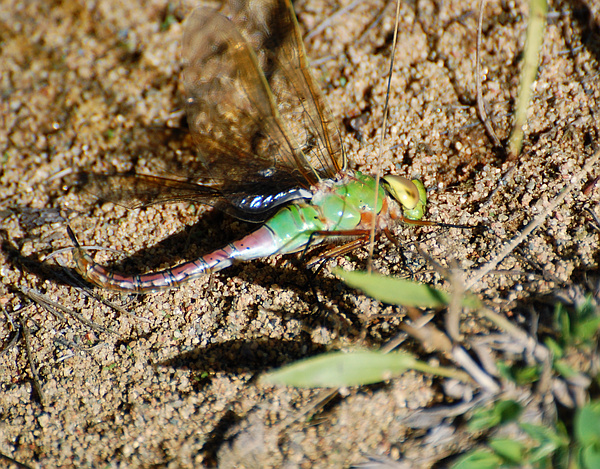
Despite his bright colors, based on the waxy appearance and curved abdomen, I think this must be a teneral (newly emerged dragonfly), specifically a teneral Common Green Darner. He managed to right himself in short order, and rested on the sand for awhile before flying off.
Bill Mason Sand Pit (part 1)
September 8th, 2013
I've been exploring the flora and fauna at the pond near Bill Mason Centre. Apparently it's a disused sand quarry. The sandy habitat attracts some unique flowers--including lots of pretty pink bell-shaped flowers in bloom right now (gerardia, I think?)--as well as interesting insects and concentrations of insects.
On my last visit I was swarmed by darners, a very large and active class of dragonflies. I like their boldness (they'll often fly right up to my face as if inspecting me), and my camera likes them because they're big enough to easily get in focus--that is, if they'll sit still long enough!
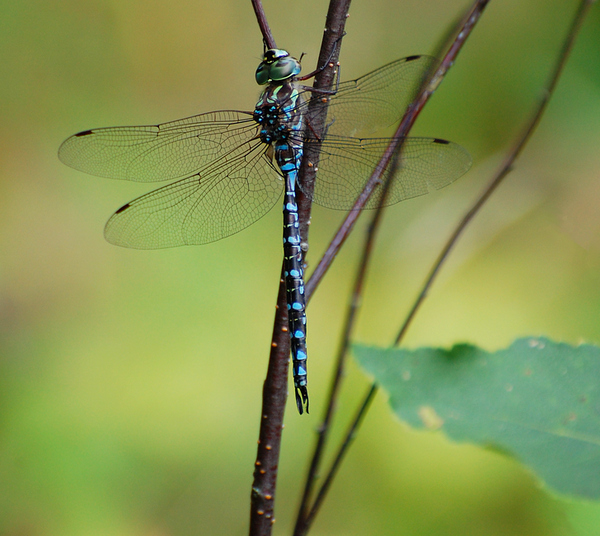
1680x1050 wallpaper
A Canada Darner, I think--they were the majority. Best viewed at wallpaper res.

Canada Darner chowing down on a small beetle.

Clouded Sulphur. Confusingly, although there exists a "Pink-Edged Sulfur", this isn't one. He was nectaring on yellow and pink flowers, appropriately enough.
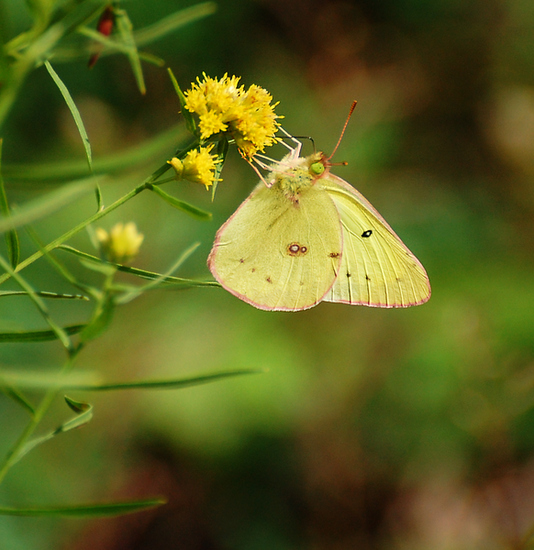
1680x1050 wallpaper
When this guy landed noisily on the sand I thought he was the strangest thing I'd ever seen:

On an impulse, I googled "cicada" back home and my mystery was quickly solved. I guess this was my first cicada. I always assumed they looked like crickets!
(Continued in next post...)
"exuberance and preposterousness"
August 30th, 2013
A selection of beautiful dragonflies and damselflies I've photographed lately, and a little about them.
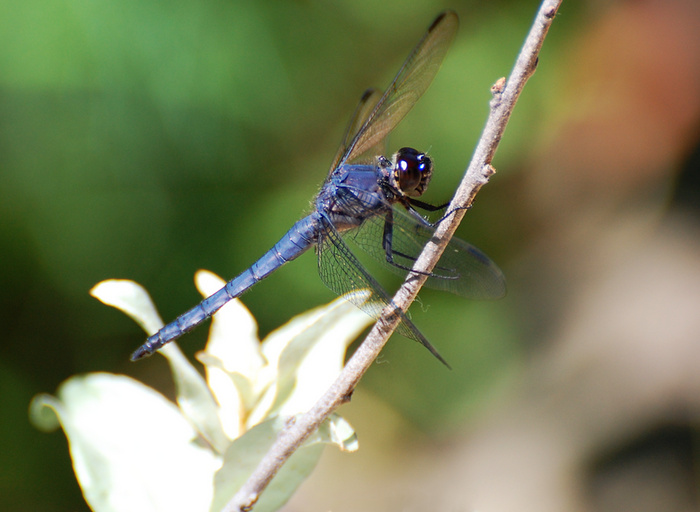
1680x1050 wallpaper
Some dragonflies you see everywhere when they're in season (maybe even from your front porch!) Others are a little more selective about their habitat. Slaty Skimmer seems to be one of the selective types. I seldom see them in general, but on the shores of Pink Lake in the Gatineau, they were perched on every other bush and flower.

1680x1050 wallpaper
The Halloween Pennants I photographed at Bill Mason Centre were females or immature males. This one is a mature male, or close to it. I found him at Andrew Haydon Park of all places. He was perched by one of the small ponds, and as if he needed the help, a bright late-afternoon sun shone behind me as I pointed the camera at him.
The male Halloween Pennnant is the inspiration for the title quote of this post, borrowed from here.
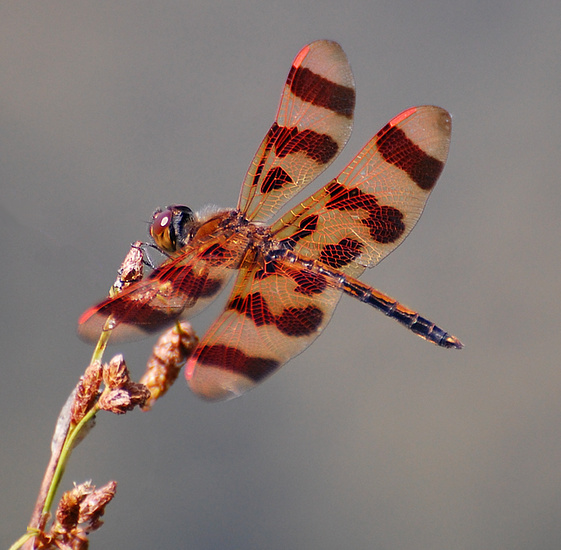
Another view of him.
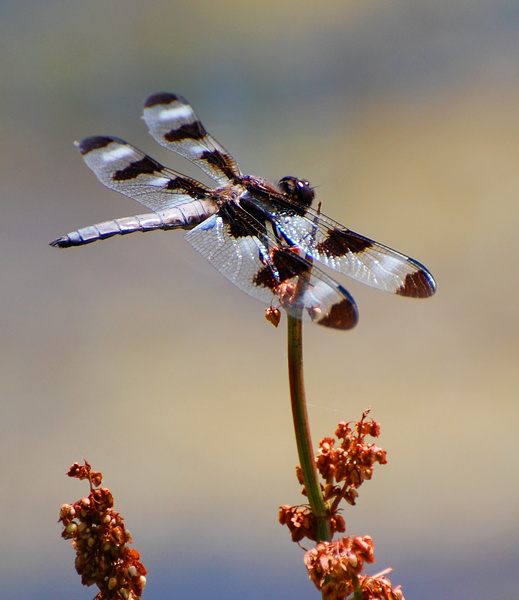
Twelve-Spotted Skimmer. Findable pretty much anywhere! Unlike darners, skimmers tend to perch out in the open and make themselves easy to see.
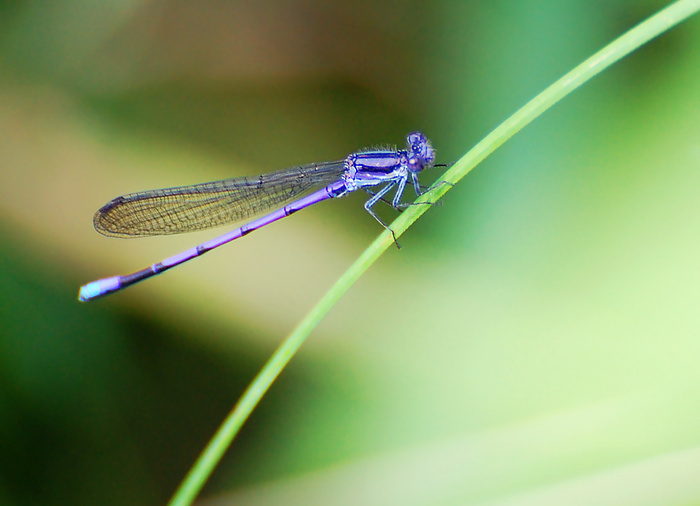
1680x1050 wallpaper
Violet Dancer. Like Slaty Skimmer, this damselfly is abundant at Pink Lake; I've also seen them elsewhere in the Gatineau such as at Chelsea Creek. I love how his thorax looks like a chunk of amethyst.
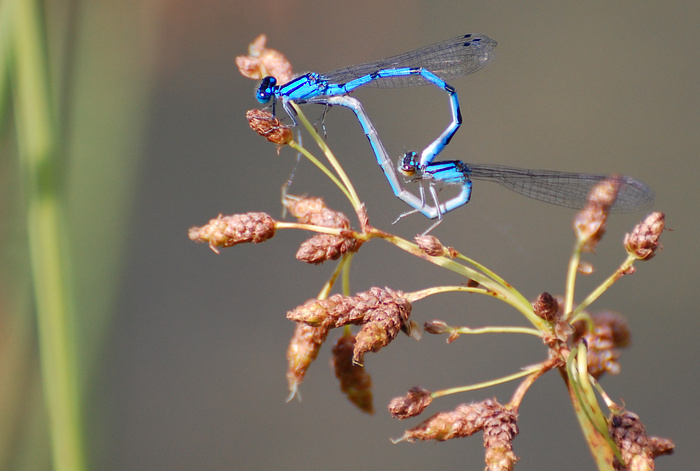
1680x1050 wallpaper
A mating pair of bluets, exact species unknown. Bluets are the tiny cerulean blue damselflies you see in summer, often teeming in the grass and underbrush near pond shores.
Hitchhikers
August 24th, 2013
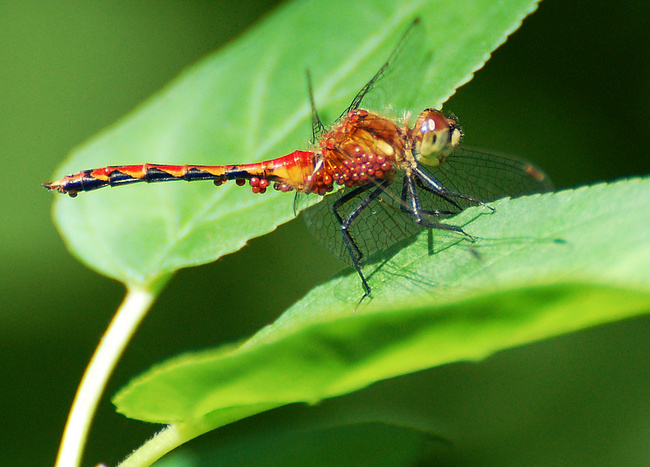
Those little things that look like growths on the dragonfly are water mites. It's only by chance that they're the same color as he is. Water mites latch onto dragonflies during their larval, water-dwelling phase. When an infested larva climbs up out of the water, sheds its skin and becomes an adult dragonfly, the mites quickly scamper off the shed skin and back onto their host. They can then stowaway to a new pond or stream.
Lord Flycatcher
August 20th, 2013
Eastern Kingbirds are so named for their bossy disposition: they defend their nesting areas fiercely, chasing and attacking crows, hawks, and even large herons. Kingbirds have been photographed appearing to ride the backs of hawks while pecking at them. I think this one has an appropriately regal air about him.
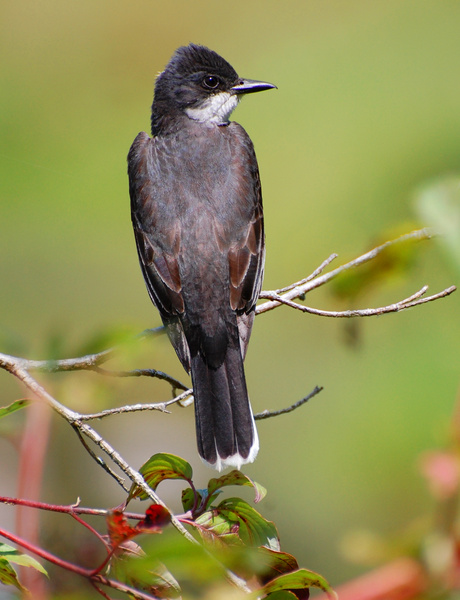
A New Dragonfly In Ottawa
August 17th, 2013
This is another of the various species of birds and insects that have been expanding their range north into our area. Prior to 2010, no Blue Dasher had ever been seen in Ottawa. In 2010 there was one. In 2011 there were lots more, and in summer 2012 Chris Lewis called them "uncountable" at Mud Lake and Petrie Island. It's hard to believe how quickly what was a vanishly rare dragonfly has become commonplace. I photographed this one from the west platform at Mud Lake.
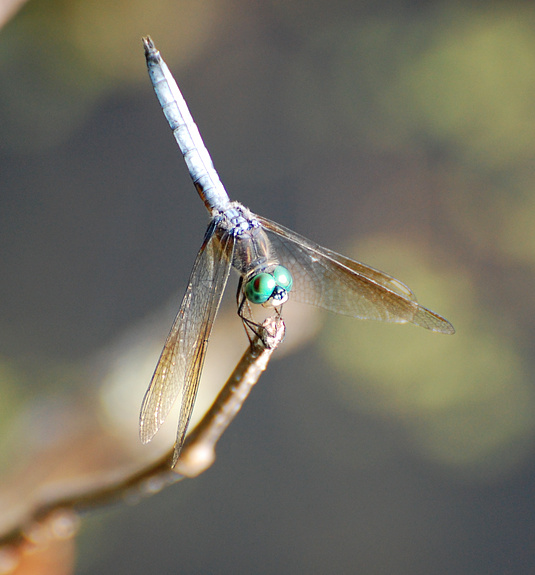
1680x1050 wallpaper
I love what the early morning light did for this picture.
|
